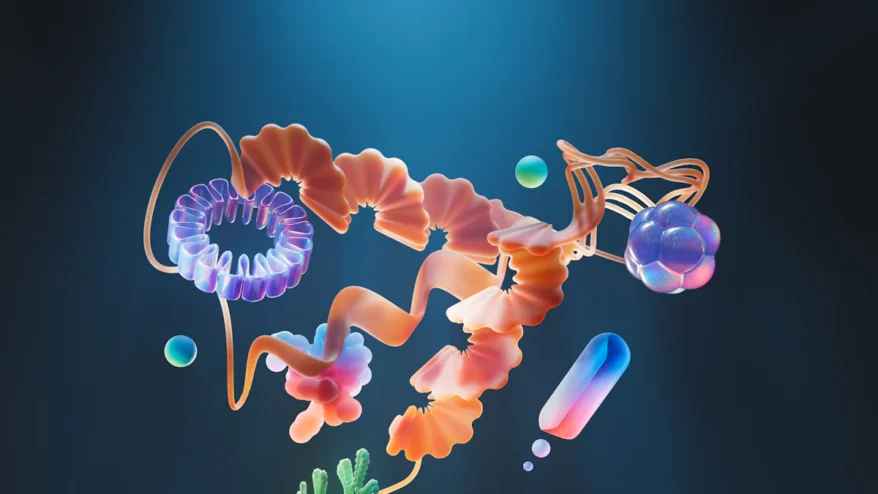2024 Nobel Prize in Chemistry: Transformative Work on Protein Structures
The Nobel Prize in Chemistry stands as a beacon of scientific achievement. In 2024, the chemistry nobel prize 2024 celebrated groundbreaking work on protein structures. Understanding protein structures is crucial in scientific research. Proteins play vital roles in biological processes. The 2024 Nobel Prize recognized the transformative contributions of David Baker, Demis Hassabis, and John Jumper. Their work has opened new avenues in drug development and biotechnology. The Royal Swedish Academy of Sciences awarded this prestigious honor, highlighting the significance of their achievements in the field.
Protein Inspired 2024 Nobel Laureates
Background of the Awardees
Academic and Professional Achievements
I find it fascinating to explore the backgrounds of the 2024 Nobel Prize winners in Chemistry. David Baker, a renowned scientist, has made significant strides in computational biology. He leads the Institute for Protein Design at the University of Washington. His work focuses on designing new proteins with specific functions.
Demis Hassabis and John Jumper have also made remarkable contributions. They are key figures at DeepMind, a company known for its cutting-edge AI research. Their collaboration has pushed the boundaries of artificial intelligence in biology.
Previous Contributions to Protein Chemistry
Before receiving the chemistry nobel prize 2024, these scientists had already left their mark. David Baker’s earlier work on protein folding laid the groundwork for his current achievements. His innovative approaches have transformed how we understand protein interactions.
Demis Hassabis and John Jumper tackled a long-standing challenge in biology. Their AI model, AlphaFold, predicts protein structures with remarkable accuracy. This breakthrough has revolutionized the field, earning them recognition in the scientific community.
Specific Contributions to Protein Structures
Innovative Techniques Developed
The laureates’ work stands out for its innovative techniques. David Baker developed methods to design proteins from scratch. These techniques allow scientists to create proteins with desired properties, opening new possibilities in drug development.
Demis Hassabis and John Jumper’s AlphaFold model represents a leap forward. It solves the complex problem of predicting protein structures from amino acid sequences. This achievement connects the sequence of amino acids to the protein’s structure, as noted by Heiner Linke, Chair of the Nobel Committee for Chemistry:
“The award honored research that made connections between amino acid sequence and protein structure.”
Key Discoveries and Findings
Their discoveries have profound implications. David Baker’s work enables the creation of novel proteins that can target specific diseases. This approach has the potential to revolutionize medicine.
AlphaFold’s predictions have accelerated research in various fields. Scientists can now understand proteins’ roles in biological processes more clearly. This understanding paves the way for advancements in biotechnology and drug discovery.
The nobel prize 2024 celebrates these transformative contributions. The laureates’ work not only advances our knowledge but also inspires future research in chemistry and biology.
Historical Context of Protein Structure Research
Evolution of Protein Studies
Early Discoveries of Proteins
I find the early days of protein research fascinating. Scientists first began to unravel the mysteries of proteins in the early 20th century. They discovered that proteins are the building blocks of life, essential for various biological functions. The first three-dimensional models of proteins marked a significant milestone. These models helped researchers understand how proteins fold and function.
Milestones in Protein Research
Over the years, several breakthroughs have shaped our understanding of proteins. Frederick Sanger’s work on protein structure and DNA sequencing earned him two Nobel Prizes in Chemistry. His achievements laid the groundwork for modern biochemistry. The development of tools for designing and studying proteins has transformed the field. These advancements have made proteins the chemical workhorses of life.
Impact of Past Nobel Prizes
Previous Laureates in Protein Chemistry
The Nobel Prize has often recognized groundbreaking work in protein chemistry. For instance, James Rothman, Randy W. Schekman, and Thomas C. Südhof received the award for their discoveries related to vesicle traffic in 2013. Their work revealed the machinery that regulates cellular processes. Such achievements highlight the importance of proteins in life sciences.
Influence on Current Research
Past Nobel Prizes have significantly influenced current research. The chemistry nobel prize 2024, awarded to David Baker, Demis Hassabis, and John Jumper, builds on this legacy. Their work on predicting and designing protein structures represents a transformative impact on biochemistry. By connecting amino acid sequences to protein structures, they have unlocked new possibilities in molecular biology. The nobel prize 2024 continues to inspire scientists to explore the vast potential of proteins.
Methodologies and Techniques

In the world of protein research, I find the methodologies and techniques used by the 2024 Nobel laureates truly fascinating. Their work has reshaped our understanding of protein structures.
Cutting-edge Technologies Used
AI Models for Protein Prediction
The AlphaFold system stands out as a revolutionary tool. Developed by Demis Hassabis and John Jumper, this AI model predicts protein structures with remarkable accuracy. It uses deep learning algorithms to solve a problem that puzzled scientists for decades. The model’s predictions rival those obtained through traditional methods like X-ray crystallography. This breakthrough has enhanced our understanding of protein function, as noted in Science News.
Computational Protein Design
David Baker’s contributions to computational protein design are equally impressive. He developed the Rosetta software suite, which allows scientists to predict and design protein structures. This tool enables the creation of proteins with specific functions, opening new possibilities in drug development. The precision of these models has transformed how we approach protein engineering, as highlighted in Jagran Josh.
Challenges Overcome
Technical Hurdles
Overcoming technical hurdles required innovation and persistence. The complexity of predicting protein structures from amino acid sequences posed significant challenges. AlphaFold’s success in this area represents a stunning breakthrough, as described by the Nobel Prize committee. The model’s ability to decode protein structures has set a new standard in the field.
Scientific Barriers
Scientific barriers also demanded creative solutions. Designing proteins from scratch involves understanding intricate biological processes. David Baker’s work in computational design tackled these barriers head-on. His methods have enabled scientists to create novel proteins, paving the way for advancements in medicine and biotechnology.
The chemistry nobel prize 2024 celebrates these achievements. The laureates’ innovative techniques have not only advanced our knowledge but also inspired future research. Their work exemplifies the transformative impact recognized by the nobel prize 2024.
Implications of the Research
The 2024 Nobel Prize in Chemistry has profound implications for both medicine and broader scientific fields. I find it fascinating how the laureates’ work on protein structures opens new doors for innovation and discovery.
Impact on Medicine
Drug Development
In drug development, the ability to design proteins with specific functions revolutionizes the field. David Baker’s research on computational protein design allows scientists to create proteins tailored for pharmaceuticals. These proteins can target diseases more effectively, leading to the development of new drugs and treatments. For instance, innovative proteins designed for pharmaceuticals and vaccines have the potential to address complex health challenges. This advancement marks a significant leap forward in personalized medicine.
Disease Understanding
Understanding protein structures enhances our knowledge of diseases. The AlphaFold model, developed by Demis Hassabis and John Jumper, predicts protein structures with remarkable accuracy. This capability allows researchers to explore how proteins function in biological processes. By understanding these processes, scientists can identify the root causes of diseases and develop targeted therapies. The insights gained from accurate protein structure predictions pave the way for breakthroughs in disease prevention and treatment.
Broader Scientific Impact
Influence on Other Fields
The impact of the chemistry nobel prize 2024 extends beyond medicine. Protein research influences various scientific fields, including biotechnology and nanotechnology. The creation of proteins for sensors and nanomaterials demonstrates the versatility of protein engineering. These innovations have applications in environmental monitoring, energy production, and materials science. The ability to tweak existing proteins for specific functions opens new possibilities across industries.
Future Research Directions
The nobel prize 2024 inspires future research directions in protein science. The achievements of the laureates encourage scientists to explore new frontiers in protein design and engineering. AI-driven approaches, like those used in AlphaFold, offer opportunities for further advancements. Researchers can leverage these technologies to tackle complex biological challenges and develop innovative solutions. The future of protein research holds promise for transformative discoveries that will shape the scientific landscape.
Societal and Global Impact

The 2024 Nobel Prize in Chemistry has far-reaching implications for society and the global scientific community. I find it fascinating how the laureates’ work on protein structures not only advances science but also benefits people worldwide.
Benefits to Society
Health Improvements
The chemistry nobel prize 2024 highlights significant health improvements. David Baker’s research group has created proteins for pharmaceuticals and vaccines. These innovations have the potential to revolutionize medicine. By designing proteins with specific functions, scientists can develop targeted therapies. This approach leads to more effective treatments for diseases. The ability to create novel proteins opens new possibilities in personalized medicine. Patients can receive treatments tailored to their unique needs, improving health outcomes.
Economic Implications
The economic implications of this research are equally profound. Protein engineering contributes to advancements in technology and industry. Proteins designed for sensors and nanomaterials have applications in various sectors. These innovations drive economic growth by creating new markets and industries. The development of pharmaceuticals and vaccines also boosts the economy. As new treatments become available, healthcare costs may decrease. This reduction benefits both individuals and society as a whole.
Global Collaboration
International Research Partnerships
Global collaboration plays a crucial role in the success of the nobel prize 2024 laureates. Scientists from different countries work together to advance protein research. International research partnerships foster innovation and knowledge sharing. These collaborations lead to breakthroughs that benefit the global community. By working together, researchers can tackle complex challenges more effectively. The chemistry nobel prize 2024 exemplifies the power of international cooperation in science.
Shared Knowledge and Resources
Shared knowledge and resources enhance the impact of protein research. Scientists around the world can access the findings of the nobel prize 2024 laureates. This access accelerates research and development in various fields. By sharing data and resources, researchers can build on each other’s work. This collaboration leads to faster progress and more significant discoveries. The global scientific community benefits from the collective efforts of researchers worldwide.
The laureates’ work not only advances science but also improves lives. Their achievements inspire future research and highlight the importance of global collaboration.
The 2024 Nobel Prize in Chemistry highlights the transformative impact of protein research. I see how the laureates’ work has revolutionized our understanding of protein structures, paving the way for advancements in medicine and biotechnology. As we look to the future, ethical challenges in proteomics must be addressed to make this technology more mainstream in clinical research. It serves as a reminder of the importance of global collaboration and shared knowledge. It inspires future generations to explore new frontiers in protein science, ensuring continued progress and innovation.
To stay updated with the latest developments in STEM research, visit ENTECH Online. This is our digital magazine for science, technology, engineering, and mathematics.
At ENTECH Online, you’ll find a wealth of information. We offer insights and resources to fuel your curiosity. Our goal is to inspire your passion for new scientific discoveries.






